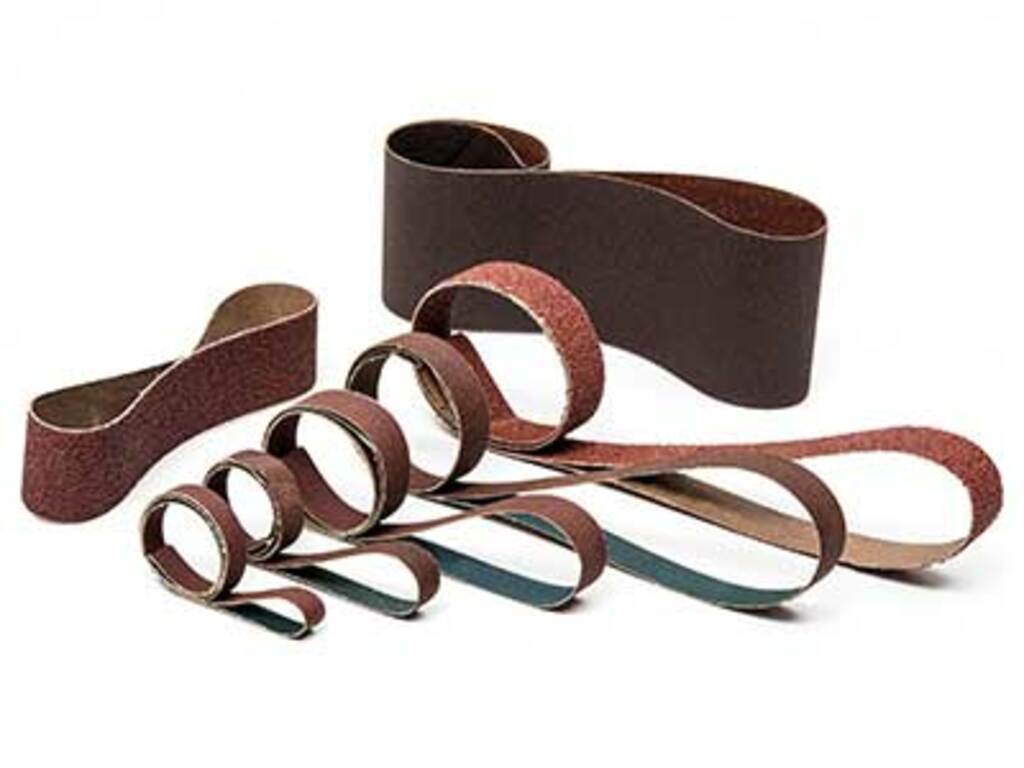Wood Sanding Abrasives Explained
 Abrasives are materials used for grinding and polishing. Sandpaper is a type of abrasive that is commonly used to smooth and polish wood. Abrasive materials are often minerals and are used to finish a piece of wood by rubbing away part of the surface. They are common and can be used in a variety of ways depending on the desired outcome. This is done before finishing, which usually involves polishing the wood to create a smooth, reflective surface. Abrasives can be physical or chemical, and come in a variety of compositions, shapes and sizes. These properties determine the best use for each type of abrasive.
Abrasives are materials used for grinding and polishing. Sandpaper is a type of abrasive that is commonly used to smooth and polish wood. Abrasive materials are often minerals and are used to finish a piece of wood by rubbing away part of the surface. They are common and can be used in a variety of ways depending on the desired outcome. This is done before finishing, which usually involves polishing the wood to create a smooth, reflective surface. Abrasives can be physical or chemical, and come in a variety of compositions, shapes and sizes. These properties determine the best use for each type of abrasive.
What is Coated Abrasive
A coated abrasive is an abrasive grain that is bonded to a flexible base, like paper, cloth, vulcanised fibre or plastic film. Sandpaper is an excellent example of this. Coated abrasives come in various grit sizes, ranging from a very coarse 2mm grain to ultra-fine grains of less than a millimetre in diameter. Some sanding abrasives are better for certain jobs than others, and some are designed to be used by hand, while others are specifically for use with machines like an orbital sander, belt sander or drum sander.
Which Abrasive to Choose?
There are four types of abrasive grains commonly used in the wood flooring industry:
- Aluminium Oxide or alox
- Silicon Carbide (Sic)
- Zirconium Dioxide or Zirconia (Zirc)
- Ceramic grain
Each type of abrasive grain has its own unique properties, which means that they all perform differently. Aluminium oxide is the most popular grain used in the wood flooring industry, as it’s tough and durable. Silicon carbide is a newer grain, which is becoming more popular as it’s very sharp and good for aggressive sanding. Zirconia is a newer grain too, and it’s the sharpest of all the abrasives. Ceramic grain is a very hard-wearing abrasive, so it’s good for sanding floors that are subject to heavy traffic.
Aluminium Oxide Sanding Abrasives
Aluminium oxide sandpaper is a sharp, blocky mineral that is the most common all-purpose woodworking abrasive. It is highly desirable because it fragments under the heat and pressure generated by sanding wood. This characteristic is called friability and it allows the aluminium oxide to renew its cutting edges constantly, staying sharp and cutting much longer than other minerals. Aluminium oxide is also a relatively tough abrasive, which means its edges don’t dull much before they fragment.
Its excellent friability and toughness make it the longest-lasting and most economical abrasive mineral. Aluminium oxide sandpaper is available in a variety of grits, with finer grits being used for lighter sanding and removing scratches and defects, while coarser grits are better for heavy-duty sanding and removing paint or varnish. There are also speciality abrasives such as wet/dry sandpaper that can be used wet or dry, and clog-resistant paper that is ideal for use with power tools.
Silicon Carbide Sanding Abrasives
Silicon carbide abrasives are a great choice for belt sanders because they have a tendency to break into smaller pieces which helps to keep the abrasive sharp. They also stay sharp for a longer period of time than most other types of abrasives. This makes them a more affordable option in the long run. There are many different types of silicon carbide, but the most common type is known as ultrafine silicon carbide.
It is harder and sharper than most aluminium oxides, making it the best choice for cutting hard materials like wood finishes, paint, plastic, and metal. It is also a friable mineral, so hard that sanding soft wood won’t make it fragment and renew its cutting edges. Though it will sand faster at first, it will dull more quickly than aluminium oxide. Silicon carbide is also generally more expensive than aluminium oxide and is perfect for sanding ceramic finishes off wood floors.
Zirconium Dioxide Sanding Abrasives
Benefits of zirconia alumina - an alloy made of zircon and aluminium oxide. This alloy is grey in colour and has a long life with a fast cut rate. It also dissipates heat well, allowing the grain to stay sharp for longer than most other man-made and naturally mined grains. The impressive durability of this sandpaper makes it particularly effective on difficult-to-grind and exotic metals. It doesn't fragment as much on wood as it does on metals, making it a fast solution with a long life. This makes it great for sanding wood, particularly the coarser grits.
Ceramic Grain Sanding Abrasives
 Ceramic grain abrasives are more costly and less common than other abrasive minerals because they are very tough and highly aggressive. Ceramics come in a wide variety of shapes, from blocks and heavy wedges to flake-like shards, and they are invariably more costly and less common than other abrasive minerals. Ceramics are also very tough and highly aggressive, making them ideal for use in a wide variety of applications. Ceramic sanding belts can be more expensive than silicon carbide belts, but they can deliver two to four times the performance.
Ceramic grain abrasives are more costly and less common than other abrasive minerals because they are very tough and highly aggressive. Ceramics come in a wide variety of shapes, from blocks and heavy wedges to flake-like shards, and they are invariably more costly and less common than other abrasive minerals. Ceramics are also very tough and highly aggressive, making them ideal for use in a wide variety of applications. Ceramic sanding belts can be more expensive than silicon carbide belts, but they can deliver two to four times the performance.
The performance of a ceramic belt depends on the ratio of ceramic grain used, so be sure to ask your distributor or manufacturer to confirm exactly what each product contains. 100% and 15% ceramic grain abrasives are very different. When selecting an abrasive to use on aluminium oxide sandpaper, it's important to choose the right grit size. Many people mistakenly believe that you should start with the roughest grit you can find, but this isn't always the case. The truth is, just because an abrasive feel more aggressive doesn't mean it's actually better.
When you’re trying to abrade very hard materials, it’s best to take the opposite approach. Think of it like a block of ice. Can you smash it with a mallet? More often than not, all you do is bounce the mallet off the ice, which remains undamaged. But you chisel away at the ice with an ice pick, you penetrate it with ease. This same principle applies to abrasive blasting.
When you’re trying to remove a thick layer of paint from a concrete wall, for example, using a large, heavy piece of sandpaper will probably just result in the sandpaper getting torn and the paint remaining intact. But if you use a smaller, lighter piece of sandpaper—or even just a sheet of sandpaper folded over on itself—you’ll be able to work your way through the paint much more easily.
When sanding with aluminium oxide, the same principle applies. Rather than start with the most aggressive grit, start with something less brutal and finer, for example, an 80 grit. You’ll find that the finer sanding belt will break up the finish much more effectively, after which you’ll be able to move on to a rougher grit to get the finish nice and flat. The mystery has been solved! It's one of those essential facts that means you don't have to worry about re-sanding pre-finished wood - whether it's beautiful wood flooring, a piece of furniture or something else altogether.